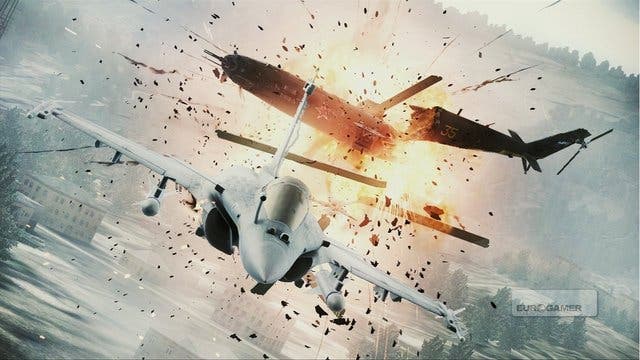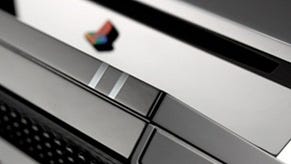Ace Combat: Assault Horizon
Modern airfare.
It's Call of Duty in the air. That's the sell. That's what the designers were told to shoot for by their spreadsheet-watching producers. That's what New York Times bestselling military author, Jim DeFelice, was asked to target when lining up the characters and arc of the story. That's the bull's-eye marketing quotation the PR men are hoping the critics will pen: a triple-A quip, ripe for sticking on the poster. And, if Namco Bandai's focus groups were illustrative of a wider consumer desire, that's what the gamers want.
Ace Combat - the quintessential Japanese air combat series, positioned in that console-perfect sweet spot between After Burner's spasmodic arcade thrills and Microsoft Flight Simulator's nerdish reservations - has been unflinchingly repositioned for the Modern Warfare generation. From the gruff American pilots reminiscing about sorties into Iraq before locking reticules onto hostile Russians, to the slow-motion cutaway kill-cams that glory in each stylish takedown, it's clear that Assault Horizon is the product of a team of Japanese creatives straining to appeal to a Western audience.
Undeniably, it's where the money lies. But is it a match made in the stratosphere? And what about those of us who loved the Top Gun-meets-anime aesthetic of the previous games? Let's not forget that the final stage in the previous game, Ace Combat 6, had us piloting a jet fighter down the barrel of a kilometre-long gun. Once upon a time, Ace Combat was Ridge Racer in the air. So what has been gained by all this faux gravitas?
Diversity, for one. Whereas previous entries in the series focused almost entirely upon jet-plane tussles high above the ground, Assault Horizon is happy to flit from MiG to helicopter to stealth bomber and back again in its tour across the Middle East and Russia.
While the game eases you in with dogfighting familiarity, soon enough you'll be piloting an Apache Longbow helicopter, hovering over terrorist camps like a throbbing cloud, raining death from above in a mission reminiscent of the flying stages in Ghost Recon Advanced Warfighter 2. The next moment, you're manning the 50-cal turret on a Black Hawk, exploding yachts in in the Suez Canal, and later you find yourself flying metres above the ground in a B-2 Spirit bomber en route to preventing an ICBM launch in Russia. Modern Warfare's most memorable flying mission is lifted almost in its entirety as you line up a dispassionate thermal imaging reticule on targets from an AC130 Spooky (before rescuing a downed pilot in a climax that surpasses Infinity Ward's).

These missions are slotted into a story that, despite being set within our own world, manages to be more ridiculous and pompous than the fictional (occasionally science-fictional) war-politics of the previous entries to the series. Nevertheless, it provides the framework for variety, and while each flavour of air combat has its own strengths and weaknesses, the ride is all the more thrilling for it.
The strongest and most frequent mission type puts you in the pilot seat of a fighter jet, where Ace Combat's pedigree shines. Here you engage with enemy planes, screeching through the clouds in search of a red bleep lock-on, the signal to unleash a hail of missiles for the takedown. The game's arcade roots ensure that, while you may stall if you lose too much speed, in general you can throw your vehicle into almost any angle at any velocity and, provided you don't crash into the ground, emerge unscathed.
But where Ace Combat's familiarity might threaten to breed contempt, life and vibrancy is injected by Dogfight Mode (DFM), a somewhat gimmicky innovation that nevertheless transforms the detached act of locking onto a target plane to something far more electric.
When you're within range of an enemy plane, a green circle appears on the HUD, indicating you are close enough to initiate DFM. Squeezing the two bumper buttons wrestles control of the plane away from you, your flight path instead locking tight to the enemy, giving you power over throttle to manage your distance, while lining up the reticule to pepper the enemy hull with machine gun fire and missiles.












